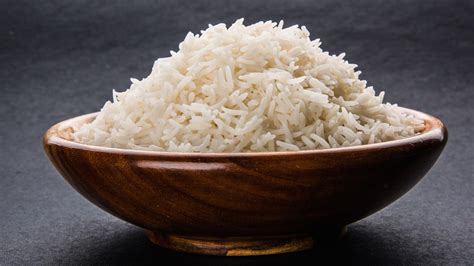**Rice for Dogs: A Comprehensive Guide to Diet, Benefits, and Potential Risks**
Introduction
Dogs, like humans, have specific dietary needs that must be met to ensure their optimal health and well-being. One important element of a dog's diet is carbohydrates, which provide energy and support various bodily functions. Rice is a widely used source of carbohydrates in dog food, and it offers several potential benefits and considerations.
Benefits of Rice for Dogs
1. Energy Source:
Rice is a rich source of carbohydrates, which are the primary energy source for dogs. It provides quick and sustained energy for dogs of all ages and activity levels.
2. High Digestibility:

White rice is highly digestible for dogs, making it an ideal ingredient for dogs with sensitive stomachs or digestive issues. It is bland and gentle on the digestive tract, reducing the risk of gastrointestinal upset.
3. Gluten-Free:

Rice is naturally gluten-free, making it a suitable option for dogs with celiac disease or gluten intolerance. Gluten is a protein found in wheat, barley, and rye that can trigger allergic reactions in some dogs.
Considerations When Feeding Rice to Dogs
1. Carbohydrate Content:

Rice is a high-carbohydrate ingredient, so it should not be the primary source of calories in a dog's diet, especially for dogs that are overweight or have diabetes. Excessive carbohydrate intake can lead to weight gain and other health issues.
2. Brown vs. White Rice:

Brown rice is a whole grain that contains more fiber, nutrients, and antioxidants than white rice. However, it is also less digestible, so it may not be suitable for dogs with digestive sensitivities.
3. Allergic Reactions:
Although rare, some dogs may be allergic to rice. Symptoms of a rice allergy can include itching, skin irritation, and digestive issues.
How to Feed Rice to Dogs Safely
1. Moderation:
As mentioned earlier, rice should be fed in moderation as part of a balanced diet. It should not exceed 20-30% of the dog's daily caloric intake.
2. Choose High-Quality Rice:
Opt for high-quality rice, such as organic or brown rice, to ensure your dog is getting the maximum nutritional benefits. Avoid rice that contains additives or preservatives.
3. Cook It Thoroughly:
Always cook rice thoroughly before feeding it to your dog. Uncooked rice can contain harmful bacteria that can cause illness.
Rice in Commercial Dog Food
Commercial dog foods often include rice as a source of carbohydrates. The amount of rice varies depending on the brand and formula. When choosing a dog food that contains rice, look for products that:
- Use high-quality rice
- Are free from fillers and artificial ingredients
- Meet your dog's individual nutritional needs
FAQs
1. Can dogs eat rice every day?
Yes, dogs can eat rice every day in moderation. However, it should not be the only carbohydrate source in their diet.
2. Is brown rice better for dogs than white rice?
Brown rice is more nutritious than white rice, but it is also less digestible. If your dog has a sensitive stomach, white rice may be a better option.
3. How much rice should I feed my dog?
The amount of rice you should feed your dog will depend on their size, activity level, and overall diet. Generally, rice should make up no more than 20-30% of their daily caloric intake.
4. Can rice cause weight gain in dogs?
Yes, excessive rice intake can lead to weight gain in dogs, especially if they are inactive or have a slow metabolism.
5. Can dogs be allergic to rice?
Yes, although rare, some dogs may be allergic to rice. Symptoms of a rice allergy can include itching, skin irritation, and digestive issues.
6. How do I know if my dog is allergic to rice?
If you suspect your dog may be allergic to rice, consult your veterinarian. They can perform a skin test or blood test to confirm the allergy.
Table 1: Nutritional Value of Rice
| Nutrient |
White Rice |
Brown Rice |
| Calories |
289 |
216 |
| Carbohydrates |
66g |
45g |
| Protein |
4g |
5g |
| Fat |
1g |
1g |
| Fiber |
1g |
3g |
| Iron |
2mg |
1mg |
| Vitamin B6 |
0.5mg |
0.6mg |
| Niacin |
5mg |
6mg |
Table 2: Comparison of White Rice and Brown Rice for Dogs
| Feature |
White Rice |
Brown Rice |
| Carbohydrate content |
Higher |
Lower |
| Digestibility |
Higher |
Lower |
| Nutritional value |
Lower |
Higher |
| Gluten-free |
Yes |
Yes |
| Suitable for dogs with digestive issues |
Yes |
No |
Table 3: Pros and Cons of Rice in Dog Food
| Pros |
Cons |
| Rich source of energy |
High carbohydrate content |
| Highly digestible |
Can contribute to weight gain |
| Gluten-free |
May not be suitable for dogs with sensitive stomachs |
| Versatile ingredient |
Can cause allergic reactions in some dogs |
| Affordable |
Lower nutritional value than other carbohydrates |
Conclusion
Rice can be a beneficial addition to a dog's diet, providing energy and supporting various bodily functions. However, it should be fed in moderation as part of a balanced and appropriate diet. By understanding the benefits, considerations, and potential risks associated with rice, you can make informed decisions about incorporating it into your dog's meals. Remember to consult your veterinarian if you have any concerns or suspect your dog may be allergic to rice.
